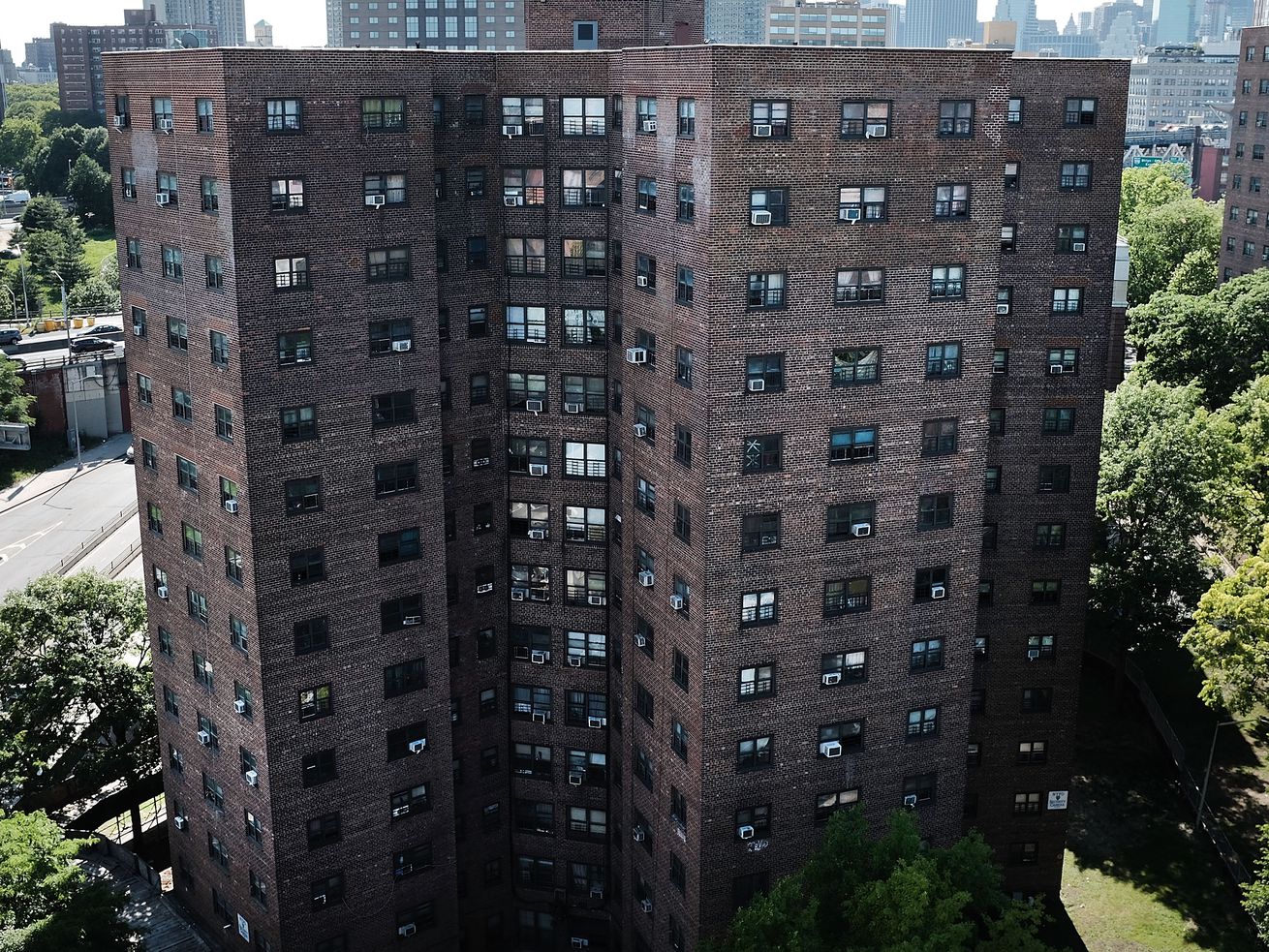The Biden administration wants $40 billion for public housing. Is that enough?
On Tuesday, Sen. Tina Smith (D-MN) gave a grim account of a 2019 fire that killed five people in a Minneapolis public housing building.
“As the fire spread, residents clamored to get out. Stairwells and corridors filled with smoke and heat and people struggled to get down the high-rise stairs,” she recounted, pointing to the lack of fire sprinklers as a “leading cause” of the devastation. Smith’s remarks came as she led a hearing on the health and safety risks that families living in federally assisted housing face, including lead paint exposure, which has toxic and irreversible effects.
For some, fixing this problem means focusing on the Department of Housing and Urban Development’s (HUD) and local public housing authorities’ oversight of these buildings. The Minneapolis public housing building lacked “extensive sprinklers” and had “an outdated stairwell design,” according to the Minneapolis Star Tribune. HUD has been engaged in a multi-year process to update and standardize inspections across the housing units under its purview.
Last week, NBC News reported on some of HUD’s proposed changes, which included “significantly expand[ing] the number of severe hazards that landlords must fix quickly” and “relax[ing] some stricter proposed inspection standards.” The process for determining the final rules is still underway, but however stringent or not they end up, they likely won’t solve safety issues in America’s public housing.
Because the biggest roadblocks to safe and equitable federally assisted housing aren’t about safety standards, but about reversing decades of underinvestment in public housing and ending the weaponization of local zoning regulations to block the development of affordable housing.
Take the Minneapolis fire: The Minneapolis Public Housing Authority (MPHA) says it aims to install sprinklers in every building, but it will take a decade, and that’s if it gets “sufficient funding.”
“Decades of federal underfunding have left MPHA with a need of more than $150 million of essential repairs and updates to its 6,000 public housing units,” MPHA said in a statement to the Star Tribune. “Against this, the agency receives approximately $15 million annually for capital repairs from Congress.”
Affordable housing is very old
According to 2019 data, “42 percent of public housing properties finished their last construction before 1975,” write researchers at the Urban Institute.
Because older properties are also larger than average, these actually represent the majority of public housing units. The researchers found that just 22 percent of public housing, or 17 percent of the housing units, have been built since 1997.
This has consequences. For one: Lead-based paint was only banned for use in housing in 1978, according to the Centers for Disease Control and Prevention, so housing built before that time is “likely to contain some lead-based paint.” But overall, old buildings need repairs and remodeling in order to be brought up to code. Some of the problem is that they were built without the standards we have today, but a big part of the problem is just that they’re crumbling.
“We haven’t built any public housing at a large scale since the early 1970s, so you have these aging buildings that, after 40 years, you need to replace the roof and the elevators and need to be brought up to modern standards,” Susan J. Popkin, director of the Urban Institute’s Housing Opportunities and Services Together (HOST) Initiative, explained.
The reason for this is relatively straightforward: The federal government has not allocated the resources to keep up with necessary capital investments. According to the National Low Income Housing Coalition, “the Public Housing Capital Fund, which Congress provides to pay for repairs, has been underfunded for so long that we now lose more than 10,000 public housing apartments each year because they are no longer habitable.” In 2010, a national assessment concluded that $26 billion in capital repairs was needed for public housing.
But that number is likely an undercount; New York alone estimates that it needs $40 billion to “renovate apartment buildings built mostly between 1945 and 1970 and now plagued by mold, lead paint, vermin and elevator and heat outages,” writes Bloomberg CityLab. The Center on Budget and Policy Priorities recommended providing $70 billion to meet existing needs, which Popkin called “the standard estimate” for what’s needed today.
President Joe Biden’s original infrastructure plan called for $40 billion “to improve the infrastructure of the public housing system in America.” While it’s larger than any president has allocated to public housing in recent years, some experts and lawmakers have said it’s still unlikely to meet the need.
A senior HUD official pushed back on the idea that Biden’s proposal is too small in the face of what’s needed. “The way that public housing gets redeveloped includes being able to bring in investment resources, the low-income housing tax credit, and project-based assistance to be able to leverage that $40 billion,” the official explained.
But this isn’t just about public housing. The private market affordable housing stock is old as well, leading to safety issues in those buildings.
Pew Trusts writes that “according to the National Housing Law Project, over 90,000 children in the Housing Choice Voucher (Section 8) program [the federal program subsidizing rent for low-income tenants] have lead poisoning.” While the government doesn’t directly build or manage these properties, local laws and regulations are largely responsible for much of the disproportionate aging of America’s affordable housing stock.
Most of America’s affordable housing is created through a process called “filtering,” meaning that new houses become old, and then they become less desirable and more affordable. But in high-demand regions, empowered homeowners have blocked the development of new and affordable housing alike, creating devastating effects downstream as the flow of affordable housing units has dried up.
One study by economist Evan Mast identified 52,000 people living in “new multi-family buildings in large cities, their previous address, [and] the current residents of those addresses,” and then looked at where those people have moved from. He did this for six cycles of moves, and found that this “sequence quickly adds lower-income neighborhoods, suggesting that strong migratory connections link the low-income market to new construction.” Essentially, when people move into nicer, new buildings, the homes they leave behind are occupied by people who often come from lower-income neighborhoods. This “housing musical chairs” game, as researcher Todd Litman called it, is an illustration of how affordable housing is closely linked to new housing development.
Expecting high standards for public and low-income housing is paramount, and it’s unacceptable that the US houses people in dangerous conditions. But a focus on standards alone ignores the biggest problem: The existing housing policy choices of the majority of America refuse to allow for new housing to be built and have failed to allocate sufficient resources for upkeep.
Author: Jerusalem Demsas
Read More



